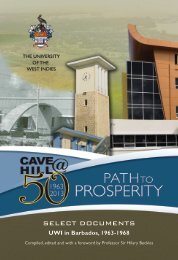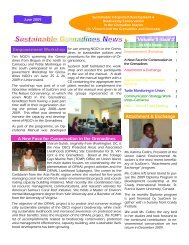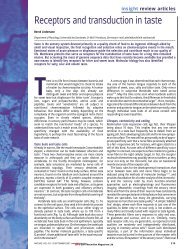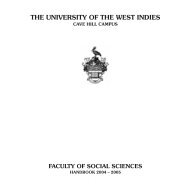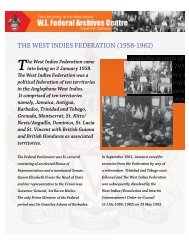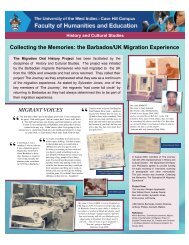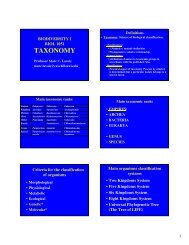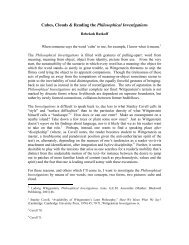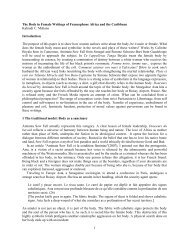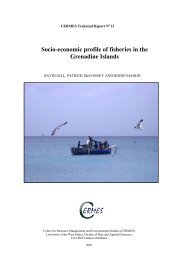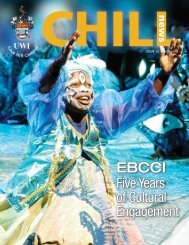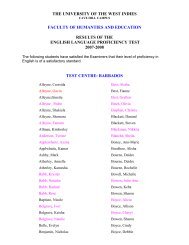THE SUSTAINABLE GRENADINES PROJECT - The University of ...
THE SUSTAINABLE GRENADINES PROJECT - The University of ...
THE SUSTAINABLE GRENADINES PROJECT - The University of ...
Create successful ePaper yourself
Turn your PDF publications into a flip-book with our unique Google optimized e-Paper software.
<strong>The</strong> Grenadine Islands lie on the Grenadine Bank extending some 120 km between Grenada and St. Vincent, and occupy<br />
about 1,500 km <strong>of</strong> the bank. This area supports the most extensive coral reefs and related habitats in the south-eastern<br />
Caribbean. <strong>The</strong> international boundary between Grenada and St. Vincent and the Grenadines lies about midway down the<br />
bank. <strong>The</strong> largest islands have towns and communities. Others are resort islands. Most are visited by yachters and fishers.<br />
Tourism and fishing are the major sources <strong>of</strong> employment in the area. Tourism development is proceeding apace, while<br />
fishery resources appear to be fully or overexploited. Governments <strong>of</strong> both countries perceive their Grenadine Islands as<br />
having high potential for tourism and associated development. <strong>The</strong>y also recognise the vulnerability <strong>of</strong> the marine and<br />
terrestrial ecosystems <strong>of</strong> the area to environmental degradation and that sustainable development depends on conservation<br />
<strong>of</strong> the resources. <strong>The</strong>re the emerging view that the entire area should be a transboundary World Heritage Site. <strong>The</strong> Tobago<br />
Cays Marine Park has been established and other MPAs are planned, but a broader approach is needed. Achieving<br />
sustainable livelihoods from marine and coastal resources will need organisational change at many levels. <strong>The</strong>re is a<br />
complex interplay <strong>of</strong> local and international private interests, local, national, and international NGOs, as well as tensions<br />
between main island government and local inhabitants. <strong>The</strong>refore, conventionally planned change is difficult to implement.<br />
<strong>The</strong> model <strong>of</strong> organisational change that is most likely to be applicable is one based the science <strong>of</strong> complex adaptive<br />
systems and chaos theory. Intervention should employ `containers', `significant differences', and `transforming exchanges'<br />
to increase the capacity for self-organisation among stakeholders. Understanding <strong>of</strong> other chaos elements such as<br />
boundaries, butterfly effects, coupling and attractors can be used to encourage self-organization.<br />
Manson, F.J. and D.J. Die. 2002. Incorporating commercial fishery information into the design <strong>of</strong> marine protected<br />
areas. Elsevier: Ocean and Coastal Management 0 1-14.<br />
Not seen<br />
Martin, K. 2003. St. Vincent and the Grenadines. Macmillan Caribbean, Oxford, UK.<br />
Not seen.<br />
Martin-Kaye, P. 1958. <strong>The</strong> geology <strong>of</strong> Carriacou. Bull. Amer. Paleont., 38:395-405.<br />
Not seen.<br />
Martinez-Soto, A. and R. Gabriel. 1989. <strong>The</strong> development <strong>of</strong> a fisheries program and fisheries processing centre in<br />
Carriacou. Report prepared for GOG/OAS.<br />
Not seen.<br />
Mason, M. 2002. Tobago Cays Marine Park benthic habitat mapping project: Final report. Coral Cay Conservation<br />
Ltd., London, UK. 24 pp.*<br />
This is a report on the mapping project where the objectives <strong>of</strong> the project were to provide the TCMP with a comprehensive<br />
benthic habitat map <strong>of</strong> the marine park. Three areas: Mayreau gardens, Horseshoe reef and Petit Tobac were given<br />
precedence over the others. <strong>The</strong> maps were stored in a GIS compliant digital format and were hoped to be useful by park<br />
management for future management purposes-build foundation for future monitoring.<br />
Mather J. 1971. Report on the ground-water resources <strong>of</strong> Carriacou, Grenadines. Inst. Geol. Sci., London.<br />
Not seen.<br />
Matthes, H. 1984. St. Vincent and the Grenadines: Formation <strong>of</strong> a fisheries development programme. FAO, Rome.<br />
Not seen.<br />
Mayreau Environmental Development Organisation. 2003a. A management proposal for the Tobago Cays Marine<br />
Park, St. Vincent and the Grenadines. Mayreau Environmental Development Organisation. Mayreau Island,<br />
Southern Grenadines. 19 th September 2003. 23 pp.*<br />
37



